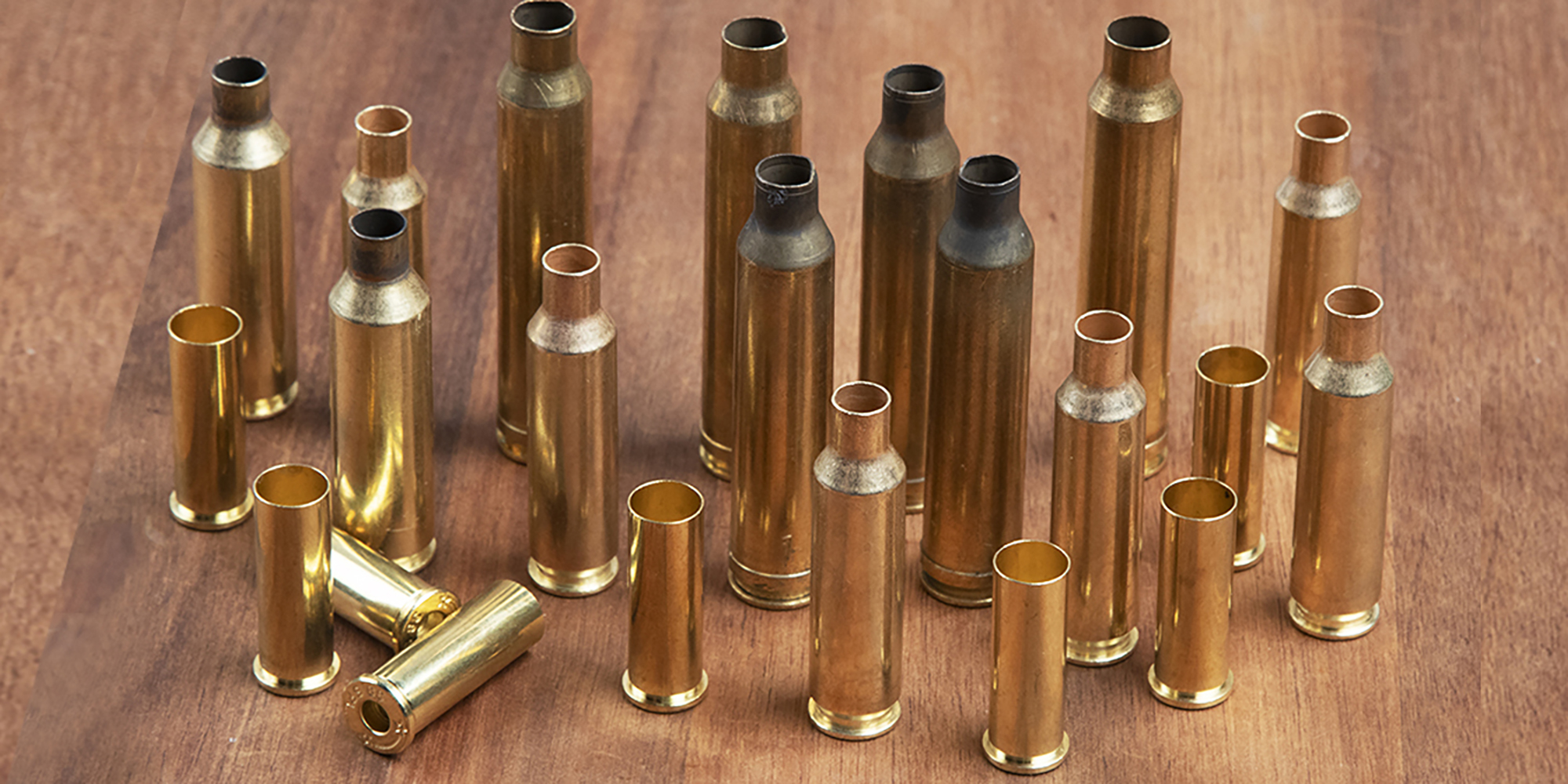Identifying and Maintaining Brass

Without a properly maintained and processed brass case, handloads will not achieve any measure of accuracy over manufactured ammunition. That being said, brass cases are the only part of a cartridge that can be reused. Each time brass is fired through a weapon, the pressure and force inside of the firearm warps the case slightly. Although the reloading process can reshape and resize cases to their original state, there will come a time when a brass case is completely spent. Brass cases are not infinitely reusable. In this section of our reloading guide, we will discuss how to identify and use brass at the various stages of its life cycle.
Virgin
Any case that has never been fired from a rifle is considered virgin brass. Although brass will be nice and shiny right out of the box, it will not be ready to load.
First, you’ll need to visually inspect each case for any deformities or irregularities. You may even find cracks around the case neck. It is vitally important to perform this visual inspection before proceeding.
You should also size the necks of your cases before attempting to load them. Factory fresh brass can often be too tight or too loose for a given caliber. After resizing, you should trim and chamfer the cases. Although trimming is technically optional, it is ideal to use cases with perfectly squared necks.
Then, debur the flash holes and uniform primer pockets to prepare your new brass. You can get inexpensive hand tools for these procedures.
Perform one last visual inspection, record your case dimensions, and your virgin brass is ready for loading.
Once-Fired and Reusable
Using previously fired brass is the most common option for reloaders. When using previously-fired brass, you are able to move right into the sizing and reloading process after cleaning. It is important to learn how to identify spent cases that can be used for reloading. Firing from cases that are too thin or too frequently used can have catastrophic consequences for both the shooter and the firearm.
Spent Cases
To identify when a cartridge case has reached the end of its maximum safe lifespan, there are four major components that need inspecting. Those are the rim, the walls, the primer pocket, and the case neck. Inspecting used cases before reloading is extremely important. Each case should be individually inspected before you begin reloading. This will ensure safe, accurate handloads from the first step of the process.
First, look at the case rims. Are they chipped, warped, or damaged? If so, the case should be discarded immediately. While you are able to resize a case and change a primer, you will not be able to fix a chipped or broken case rim.
You should then inspect the case wall. This is going to be the most important part of a visual inspection and will require a thorough, patient hand. After repeated firings and case re-sizings, brass cases become too thin to safely shoot. While the case walls may appear perfectly fine on the outside, thin spots will form inside the walls of the case. These thin spots can (and will) lead to case head separation, resulting in a case being lodged in your gun’s chamber. To find thin spots inside of a case wall, run a bent paperclip along the inside of the case, feeling for any ridges, bumps, or abnormalities. This is a time-consuming process, but should be done with every piece of rifle brass you reload.
Check the primer pocket. Visually inspect to see if all of the primers are still in the fired brass, or if any of them are loose. Look for any signs of ill-fitting primers when seating, and ensure that no gas is escaping the primer pocket.
Lastly, checking case necks is the most simple of all. Perform a 360-degree visual inspection around the neck, looking for cracks, bends, or ridges. Be sure that the case has no split or ragged edges.